Kraken January Crypto Market Fluctuation Report: Earthquake Level Transformation?
This article is from Kraken
Translator: Odaily Planet Daily Moni
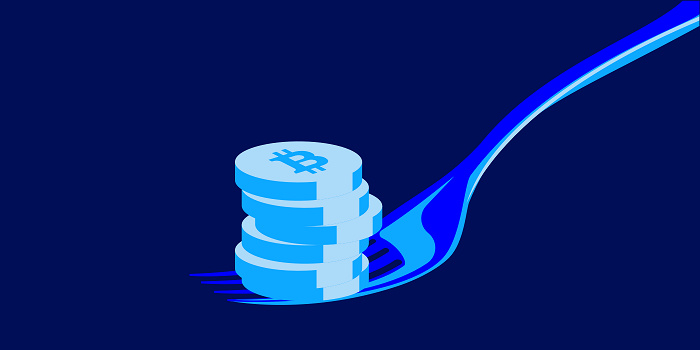
Before entering the text, let Star Jun (WeChat: o-daily) and everyone review the developments worth watching in the cryptocurrency market in January 2020:
- In a year, 27 items of landing applications were disclosed. The IBM blockchain is only for nurturing cloud services?
- Vitalik: Uniswap v2 Price Predictor Can Withstand Lightning Loan Attacks
- Take Mentougou as an example: Do investors in FCoin have a future?
1. In January 2020, the price of bitcoin rose by 30.3%, which is also the best January since 2013;
2. In fact, gold, oil, and U.S. Treasury bills performed very well in January 2020. This correlation indicates that the US-Iraq conflict and epidemic have affected the price of bitcoin. Some people in the industry have previously believed that as Bitcoin has become more mature, it can already be used as a substitute for traditional safe-haven financial assets. Judging from the market situation in January, this view has basically been effectively supported.
3.The monthly average volatility of Bitcoin is approximately 96%. If we look back at January 2011, the Bitcoin volatility at that time was 38 percentage points lower than the average. If this trend can be maintained in February, it means that Bitcoin Prices will continue to rise and volatility may decline further.
4. In January 2020, the number of addresses with a balance between 10-100 BTC is in the "cumulative" stage, while addresses with balances between 1,000-10,000 BTC are exiting the "wait and see" stage. From historical data, when the above two types of addresses are not in the "cumulative" and "wait and see" stages, volatility will re-enter the market.
5. Judging from the changes in market sentiment and holdings in January 2020, greater market volatility may be expected in the coming weeks or months.
Volatility Trend
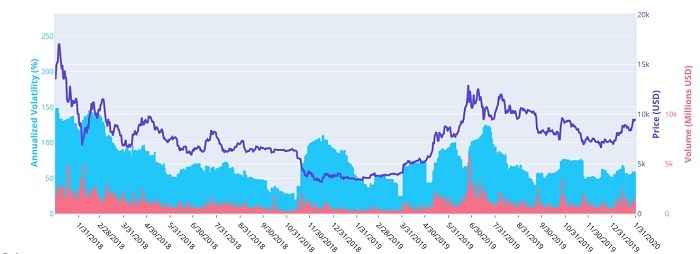
1. After setting the lowest price of US $ 6,915 for the month on January 2, 2020, Bitcoin began its "rebound path" and continued until the end of January. And, on January 30, the price of Bitcoin hit its highest point in the previous three months, reaching $ 9,568. Bitcoin's closing price in January 2020 was $ 9,339, an increase of 30.3%.
2.Bitcoin's annual volatility peaked on January 14, 2020, at 67.9%, which is the highest level since November 23, 2019, and then began to slow down in the second half of January.
3. On January 15, 2020, the single-day trading volume of Bitcoin soared to 2.5 billion U.S. dollars. This day's trading volume accounted for 8.5% of the total trading volume of the month, setting a new 11-week high.
Monthly report

1. Bitcoin's annual volatility rose by about eight percentage points in January 2020 to 58.2%, setting a new high in the previous three months.
2.Bitcoin transaction volume plummeted 19% in the fourth quarter of 2019, but increased by 56% month-on-month in January 2020, basically returning to the level of August 2019.
3. In January 2020, in addition to a 30.3% price increase, which was the best "January" performance since 2013, Bitcoin also achieved its best monthly performance since May 2019. Both the price and volatility of Bitcoin have been on a downward trend in the past six months, but in January 2020 it returned to the price level of August 2019.
4.Bitcoin's annual volatility growth rate is about 12.09 times, a year-on-year decrease of 1.2%, which indicates that the increase in bitcoin's value is accompanied by an increase in network usage.
Market relevance
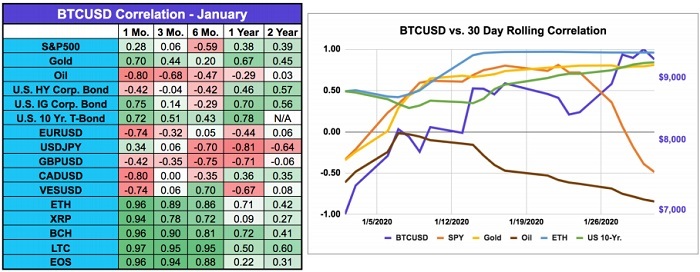
1. In January 2020, the "one-month correlation" and "three-month correlation" indicators between Bitcoin and oil / gold changed most significantly. The Bitcoin / Gold "Monthly Correlation" indicator rose from -0.12 to 0.70, and the "Three Month Correlation" indicator rose from 0.21 to 0.44; the Bitcoin / Oil "Monthly Correlation" indicator fell from -0.30 to -0.80, The "three-month correlation" dropped from -0.58 to -0.68. The reason for this change may largely be the market's response to the US-Iran conflict and the corona virus outbreak.
2. Bitcoin / Alzheimer's “one-month correlation” appeared in December 2019 between 0.43 and 0.81, but this positive correlation was further enhanced in January 2020.
3. The "six-month correlation" between Bitcoin and U.S. Treasuries has changed from no correlation (-0.05) to positive correlation (0.43). The correlation between Bitcoin and high-yield corporate bonds has been enhanced, but the correlation with traditional financial assets Correlation has weakened across the board.
4. If the level compares the Bitcoin / altcoin correlation within one and two years, it will be found that this indicator is gradually weakening. One of the most obvious changes in January 2020 is the "two-year correlation" of Bitcoin / XRP and Special / Bitcoin Cash (BCH), with the former falling from 0.55 to 0.27 and the latter from 0.60 to 0.41.
5. The "1-year correlation" of Bitcoin / oil increased from -0.04 to -0.29, while the "2-year correlation" of Bitcoin / S & P 500 index increased from 0.30 to 0.39. In addition, the "1-year correlation" and "2-year correlation" of Bitcoin / traditional financial assets have both declined.
Key event
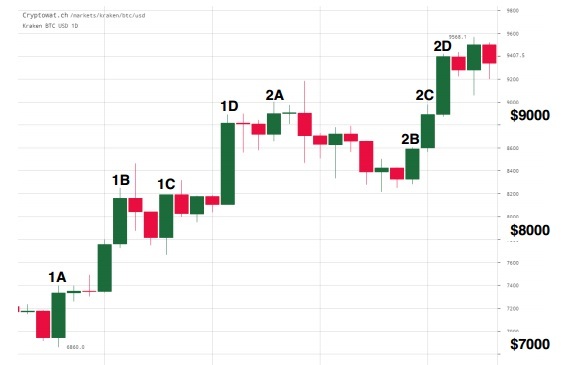
1.Clashes between Iran and the U.S. surface
January 3: U.S. forces wipe out senior Iranian commander Qassem Soleimani in an air strike, allegedly planning to conduct "imminent and dangerous attacks" on Americans, Iran's supreme leader Ayatollah Ali Khamenei has vowed to "severe revenge" on the United States.
January 7: The U.S. Department of Defense reports that Iran fired more than a dozen ballistic missiles at a U.S. military base with no casualties.
January 10: A news report states that a Ukrainian Boeing 737-800 carrying 176 people crashed in Iran.
January 14: Video exposure of two Iranian missiles hitting a Ukrainian aircraft.
2. Coronavirus outbreaks cause traditional markets to fall
January 17: Coronavirus forces alert across Asia.
January 26: More than 2,000 confirmed coronavirus cases, of which 56 have died; growing worldwide concern about virus transmission, with a California man becoming the third case in the United States, while Malaysia, Singapore, Thailand, and Macau, China Reported infection rates have also increased.
January 27: Fear of the coronavirus overwhelms the market. The Standard & Poor's 500 Index fell 1.6%, its biggest drop since October 2, 2019, when the decline was due to concerns about a slowing economy caused by the trade conflict in the U.S., and stocks in the supply chain and tourism sectors were the first to suffer. In addition, the benchmark index of major European stocks fell 2% with the Tokyo Nikkei 225 Index
January 28: The number of confirmed coronavirus cases in 31 provinces in China has increased to 5,974, with 132 deaths. France has confirmed a fourth case of coronavirus, and the UK warns people travelling to mainland China.
Macro trend
1. North American market: The ISM manufacturing index has fallen to its lowest level since 2009, consumer confidence has fallen, consumer credit growth has been slower than expected, and the job market has increased by a disappointing 170,000 jobs (2019 average) (176,000), and the unemployment rate remains unchanged at 0.5%. Due to net exports, the real GDP of the United States in the fourth quarter increased by 2.1% quarter-on-quarter, which was in line with the average of the past decade. Canadian data showed that the economy continued to weaken, as did the Mexican economy, which contracted 0.2% in the fourth quarter.
2. Europe: The overall inflation level in the European market increased by 1.3% year-on-year and 1.0% month-on-month, which was the fastest month of growth since April 2019. The European Central Bank announced plans to keep interest rates low or cut interest rates while buying 20 billion euros of bonds each month until inflation was just below 2%. Inflation in the UK has slowed unexpectedly to a three-year low, and Bank of England Governor Mark Carney said the UK economic data was "good enough" but acknowledged that the Monetary Policy Committee needed to cut interest rates Learn more about the economic recovery before.
3. Asia: The People's Bank of China reduced the deposit reserve ratio (RRR) of all domestic banks by 50 basis points, which means that 80 billion yuan of liquidity will flow into the local financial system. Since 2011, the People's Bank of China has actively reduced the deposit reserve ratio of large and small banks, and has reduced the deposit reserve ratio by 900 basis points. On January 15th, the United States and China signed the first phase of a trade agreement, but a coronavirus broke out in mainland China at the end of the month. On the other hand, the Bank of Japan said that the country's economy has been showing a "moderate growth trend", so it kept interest rates unchanged at -0.10%.
The killer whale started to move?
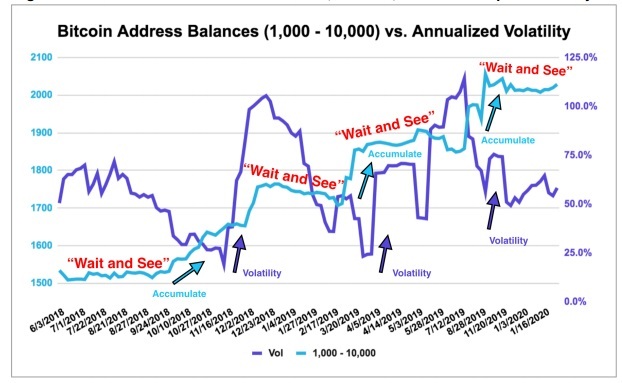
1. In December 2019, approximately 50% of Bitcoin wallet balances were between 10-100 BTC and 1,000-10,000 BTC. From historical data, the whale population holding 1,000-10,000 BTC is likely to gather Bitcoin during this period, usually accompanied by rising market volatility.
2. We also notice that the stagnant number of "whale" addresses indicates that they are on the sidelines official website. If the market continues to maintain an upward trend, we may It also maintains low volatility for several months.
3. Although the price of Bitcoin soared in January 2020, the volatility did not increase significantly. However, when we enter February, we will find that the number of bitcoin whale is also increasing, which may mean that this group of people holding 1,000-10,000 BTC is brewing market sentiment and moving to a new accumulation stage.
Open interest soars to September 2019 levels

1. In January 2020, the open positions of Kraken Bitcoin Futures and Bitmex XBTUSD permanent contracts both exceeded 1 billion U.S. dollars. The last time I saw this happened in September 2019, this may be due to clearing and closing positions. Caused by. Although this indicates that a return of $ 1 billion in open contract revenue means greater volatility, it also indicates that the market has the potential for greater growth.
2. In January 2020, the number of open bitcoin futures contracts soared by 60%, and the open positions exceeded $ 4 billion. About half of them came from the two exchanges BitMEX and OKEx, and the holdings of both companies exceeded $ 1 billion. In addition, the value of the carbon chain also learned that Deribit, a crypto derivatives trading platform, also disclosed that its monthly value of bitcoin futures options transactions increased by 70%, and the bitcoin futures market may start to improve due to the rise in bitcoin prices.
3. The growth of open positions indicates that the market has moved away from the "bear market" that began in the first quarter of 2019 and is now transitioning to a "bull market". The latest rally may mean that the market is leading the uptrend and is more likely to prepare for the next explosive trend.
Next, what important events are likely to affect the market?

We will continue to update Blocking; if you have any questions or suggestions, please contact us!
Was this article helpful?
93 out of 132 found this helpful
Related articles
- Coin price soared, 51% attack, "destruction" and "reputation" on the way of reducing Bitcoin Cash (BCH) production
- Don't blame "Lightning Loan", bZx is attacked by it
- Five countries are strengthening cryptocurrency regulation
- Why is Meme essential to the success of cryptocurrencies?
- Read the Byzantine General
- Technical Primer | Explore the key details of BFT and Libra's Consensus components
- Crypto Custody Company Copper Completes Series A Financing, MMC Ventures, LocalGlobe Participate






